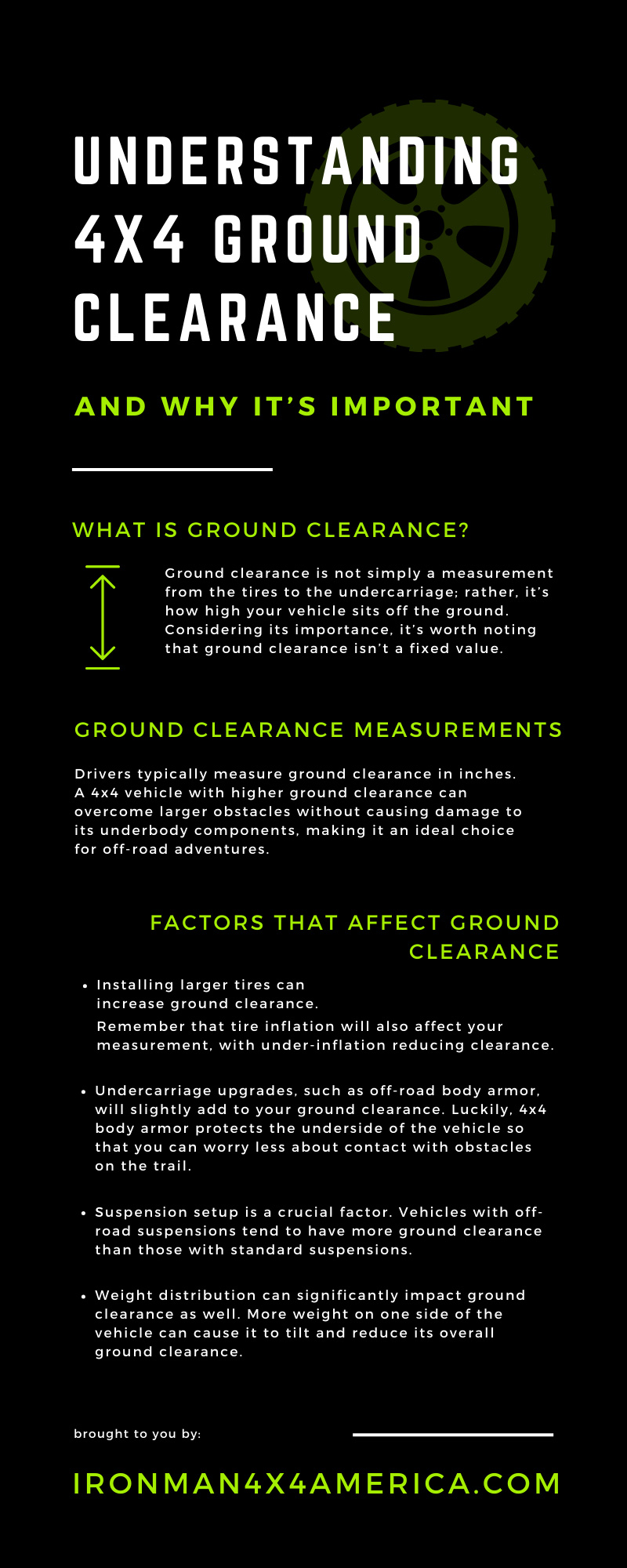Understanding 4x4 Ground Clearance and Why It’s Important
Off-roading can take you off the beaten path and into the wild, testing both driver skill and vehicle capability. There are many features available on 4x4 vehicles that enhance their competence when tackling challenging terrain. Ground clearance is one of them, and one of the most important. In fact, it can be the difference between getting there and getting stuck.
Whether you’re a seasoned off-road enthusiast or a beginner, understanding your vehicle’s ground clearance and its implications can affect your off-roading experiences. It can help you navigate rugged terrain with confidence and ease. So, buckle up, and let’s get started on this journey of understanding 4x4 ground clearance and why it’s important.
What Is Ground Clearance?
Ground clearance refers to the vertical distance between the lowest part of a vehicle’s undercarriage and level ground. Your tires or mud flaps wouldn’t be the lowest point, though they are within the space between the ground and your undercarriage.
To put it simply, ground clearance is how high your vehicle sits off the ground. While basic, considering its importance, it’s worth noting that ground clearance isn’t a fixed value.
Ground clearance tends to change depending on various factors, including the vehicle’s load, tire inflation, and suspension setup. Various factors will affect your vehicle’s ground clearance. For instance, if a vehicle is carrying extra weight, the clearance will decrease due to the added weight compressing the suspension. Similarly, under-inflated tires can also reduce ground clearance a small bit, while a lift kit or modified suspension can increase it.
Ground Clearance Measurements
Drivers typically measure ground clearance in inches. A 4x4 vehicle with higher ground clearance can overcome larger obstacles without causing damage to its underbody, allowing drivers to navigate challenging terrain with more confidence.
Thankfully, you can gain ground clearance by lifting your vehicle. At Ironman 4x4, we carry Foam Cell Pro suspension lift kits that lift your vehicle. They are robust enough to handle off-road travel with ease. Running larger-diameter tires will also give your vehicle more ground clearance, too, especially for its axles–often the lowest point of a vehicle.
Why Is Ground Clearance Important for 4x4 Vehicles?
In general, vehicles with higher ground clearance are better suited for off-roading. They are more likely to overcome obstacles such as rocks, logs, and uneven terrain without damaging the underside of the vehicle.
Vehicles with higher ground clearance can tackle tough terrain that traditional cars can’t handle. With more ground clearance, 4x4 vehicles can navigate through deep ruts, steep inclines, and other challenging off-road conditions better than stock-height rigs can.
For example, driving over large rocks or other trail obstructions in a vehicle without enough ground clearance can lead to potential undercarriage damage or end up with the vehicle getting stuck.
These potential issues highlight the importance of pairing good ground clearance with stout body armor. For example, Ironman 4x4 offers a variety of off-road undercarriage protection including skid plates. Skid plates provide ample protection against tree stumps, rocks, and other trail hazards.
Summing it Up
Understanding 4x4 ground clearance and why it’s important is crucial for any off-roading enthusiast. It directly affects a vehicle’s performance while off-road and its ability to successfully navigate through tough terrain. Always keep your vehicle’s ground clearance in mind before hitting the trails.


